For brands focused on how to improve customer retention, hope lies in the huge gap between the customer experience people expect nowadays, and the reality of most ecommerce experiences. As it turns out, most brands don’t personalize the effort enough and only 18 percent of brands have customer retention strategies!
Shifts in online behavior have been studied thoroughly and now more then ever it's clear that retaining customers depends on a brand's ability to deliver online customer experiences that engage customers as individuals. The brands that do this build stronger customer relationships that lead to higher customer retention rates.
Post lockdown customers expect more personalization
During the summer of 2020, Salesforce surveyed over 15000 mostly B2C consumers for their 4th annual State of the Connected Customer report.
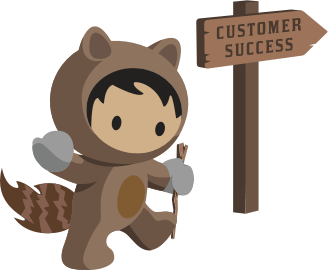
People were adjusting to the lockdown blues and spending more time and money online than ever before. Customer expectations rose to heights never seen before and the Salesforce report took note:
Customers demand digital-first convenience and are leaning on brands to innovate like never before. They’re seeking not just more personalized experiences, but empathetic ones.
Source: Simon Mulcahy, Salesforce CIO
Personalization had been a growing for a number of years by then but it rose again last year with 52% of customers expecting offers to always be personalized always be personalized — up from 49% in 2019.
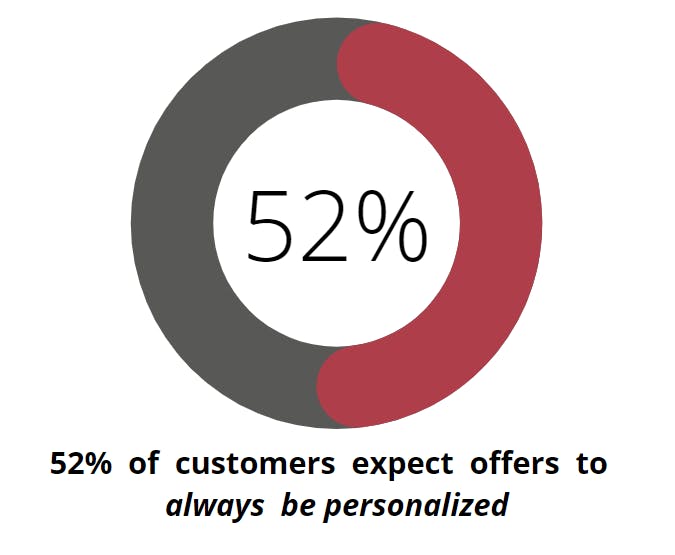
The majority of customers now expect companies to understand them and treat them as individuals. So what can you do to meet customer expectations in 2022?
Read on as we discuss the what and the why of customer retention, the key metrics, and then break down how to personalize onsite and offsite retention tactics for your ecommerce shop.
What is customer retention?
Customer retention is about a brand's ability to retain customers over an extended period of time. A high customer retention rate means your brand has many more loyal customers that return to buy your product or service than those who don't come back to shop and perhaps instead choose to shop with your competitors.
Why does customer retention matter?
Knowing how to make loyal customers is one of the most important things for a brand because customer retention is cheaper than customer acquisition.
Customer retention statistics show it costs 5x more to acquire new customers than hang on to existing customers. And yet, while 44% of brands focus on customer acquisition, only 18% focus on customer retention.
A well-thought-out customer retention strategy increases customer lifetime value and boosts revenue. If you can build unique relationships with your customers you are a lot more than just another website or store. Loyal customers will trust you with their money because you provide an enjoyable experience on top of great products and services.
Customer retention statistics
Customer retention statistics show it costs 5x more to acquire new customers than to hang on to existing customers. And yet, while 44% of brands focus on customer acquisition, only 18% focus on customer retention. Besides that...
- The probability of selling to a new customer is only 5%-20%
- The probability of selling to an existing one is 60%-70%
- 68% of new customers come from current customers
- 44% of millennials say they are loyal to their favorite brands
- 58% of customers belonging to a brand’s loyalty program buy from that brand at least once per month.
Key customer retention metrics
There are three main customer retention metrics to follow to build a strong customer retention strategy.
- Customer retention rate
- Customer churn rate
- Customer lifetime value
There are formulas for calculating all three of these metrics but the first thing to consider is how to define your own success.
What is a good customer retention rate?
You have to find a comparative standard to understand your retention rate. One way to do it is to compare your historical data to your current rate. Alternatively you can look up customer retention rates by industry and compare those.
Either way, to calculate your own customer retention rate you want to first define a time period, 1 month for example.
How to calculate your customer retention rate
Then check how many customers you have at the beginning of the month, how many you added during the month, then subtract any that you lost, and finally multiply by 100 to get your rate.
It goes like this:
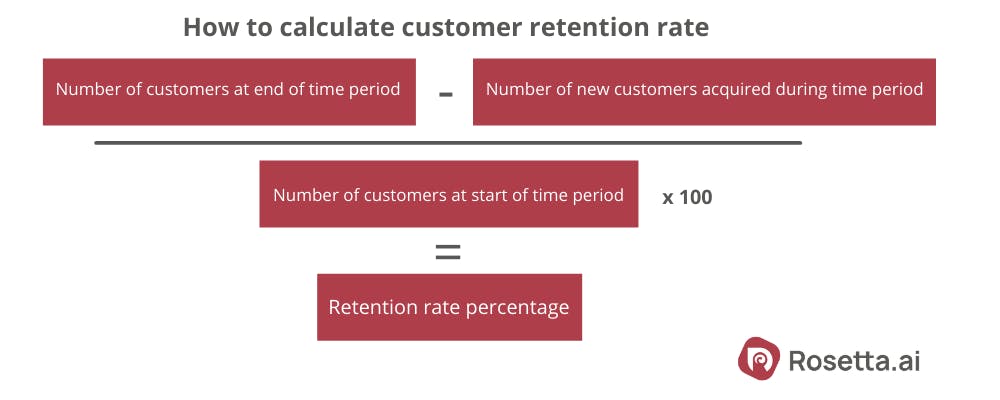
For example, if you had 100 customers at the end of January, acquired 21 new clients and lost 5, in February, then at the end of the time period you would have 116 customers and your customer retention rate would be 84%.
How to improve ecommerce customer retention, onsite and off
Maximizing customer retention online requires a two-part strategy that on one hand inspires customers to return to do repeat business once they've left your site instead of switching to a competitor; and, on the other hand, keeps customers onsite and happy to spend more in the first place because you provide a caring customer experience.
Part one: onsite customer retention strategies
Retaining customers while they're actually visiting your ecommerce shop means designing your customer journey to encourage customers to keep clicking and reduce friction wherever possible. As noted above creating unique a customer experience on your website for each visitor is the key.
Prioritize customer relationship management
A good customer retention program begins with prioritizing initiatives to get to know your existing customer base intimately. You want to collect customer feedback so you can:
- Learn what customer satisfaction means
- Pay attention to customer complaints
- Know when to be proactive with customer service interactions
Customer surveys can help but the more valuable consumer insights may be in your own first-party data. Your customer analytics can tell you which customers are most profitable and identify which products and services sell best so you can optimize your offers to them and design better products.
Analyze individual preferences
A CRM platform like Hubspot collects data and centralizes it so you have a list of existing customers and their interactions with your brand. A CDP platform like Oracle on the other hand gives you data on customer behavior and especially customer touchpoints with your products or services.
Other data analytics apps take your first-party data to the next level, offering the onsite tools to engage customers with personalized product recommendations and timely promotions.
Engage customers with an onsite personalization engine
True personalized onsite marketing differs from the everyday kind we often see nowadays. Most personalization engines offer products that are “recommended just for you” but really the offer is for a large segment of people.
While this kind of recommendation is often marketed as “personalized,” the products shown are only vaguely related to what individuals are actually looking for.
Newer systems combine real-time customer data and preferred attributes. With this data in hand, machine learning figures out what individual shoppers are looking for and provide items that area truly “recommended just for you.”

You can put recommendation components on any page, but many successful brands get the greatest ROI from personalized recommender boxes on their product details page.
Seeing products that customers actually intend to buy is a nice surprise, and that emotional connection reduces bounce rate, increases click throughs and makes more conversions.
Time your onsite promotions well
Offering well timed discount pop-ups has proven to be extremely worthwhile for cosmetics sites, namely L’Oréal Luxe Division brand, Shu Uemura, who used Hesitant Shopper Detection determine when shoppers were beginning to churn. Offering the right promotion at the right time led Shu Uemura to a huge 140% CVR increase.
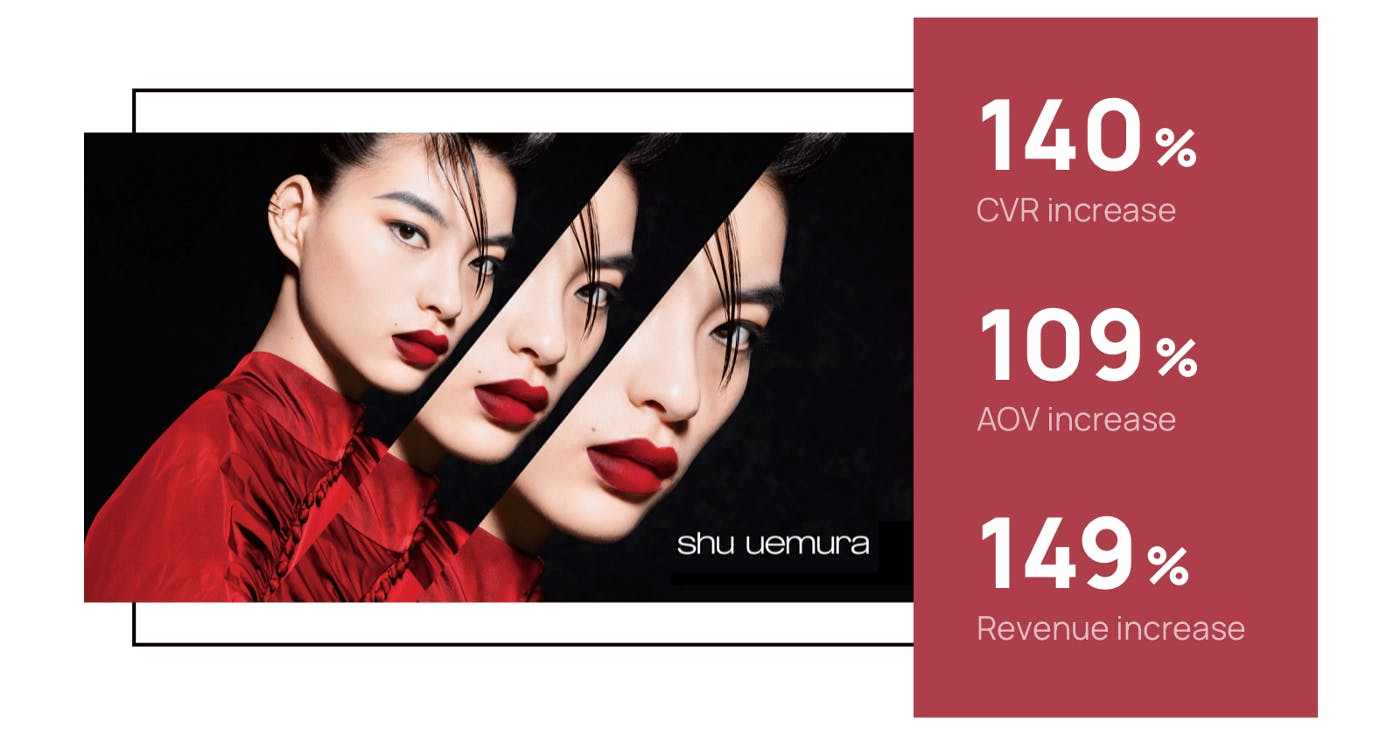
Promotional pop-up example
Shu Uemura reduced their bounce rate and increased AOV because they knew where and when on the customer journey to engage their customers.
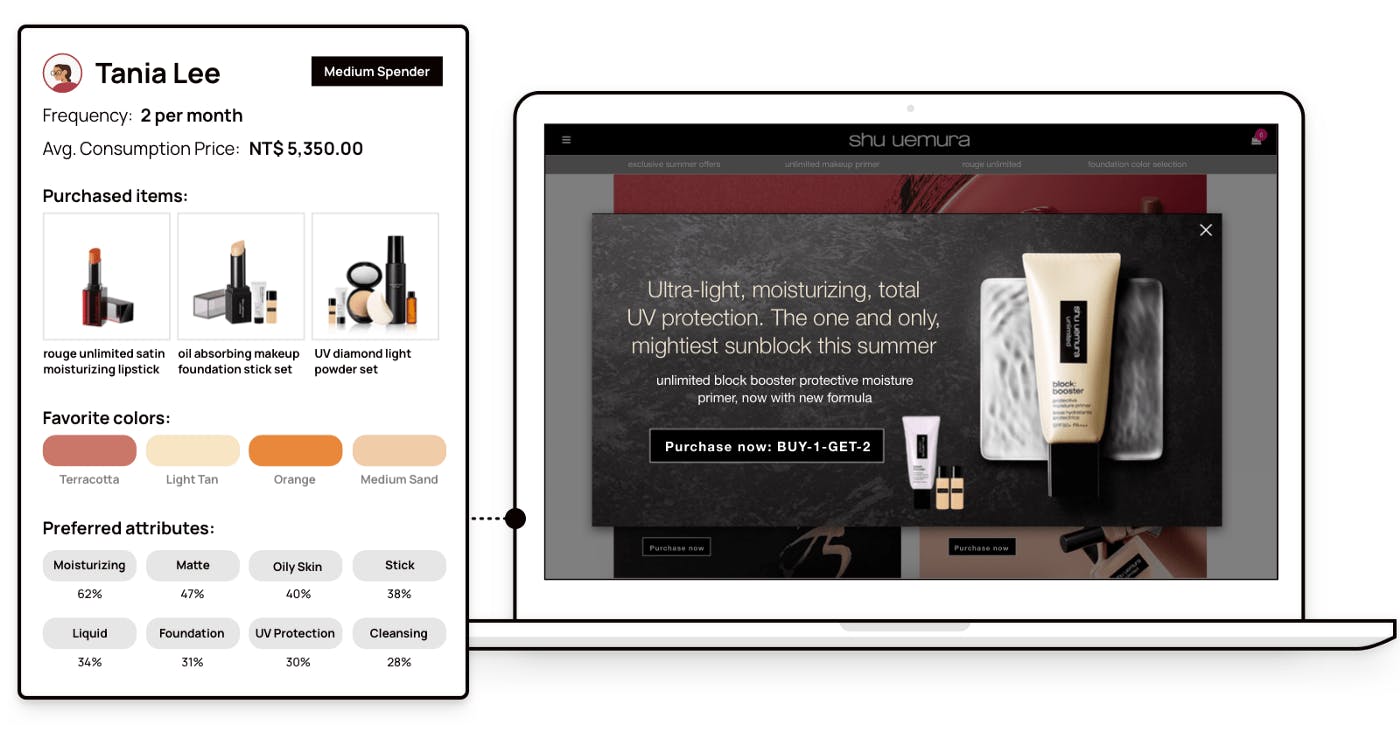
Customer hesitation can be detected as more items get clicked, or added to cart and during tab switching — and then discounts can be offered at just the right moment to increase your cross-sells and upsells.
Authenticate your brand with UGC (user generated content)
The popularity of UGC in the last year is another clear response to the changing expectations of online consumers.
Brands can do well to treat customers as individuals but another way to connect is to align content with users that your customers already have connections with on social media.
In the fashion industry especially, brands are using it to improve their customer engagement. Some brands have seen a 5x conversion rate increase over branded content.
User generated content example
Barts uses UGC to promote their brand and has seen AOV rise by 21.49%.

Users trust UGC over branded content. This trust is key to building online experiences that that convert sales and develop customer loyalty over the long term.
Offer irresistible rewards via customer loyalty programs
When you reward customers who use your brand it makes a big impact. The more rewards they get from your brand the happier they are and the more they continue to support your brand.
It’s another emotional form of engagement that gets remembered and serves to retain customers long term.
Customer loyalty program example
The Blind Barber offers “exclusive rewards, every time you shop:”
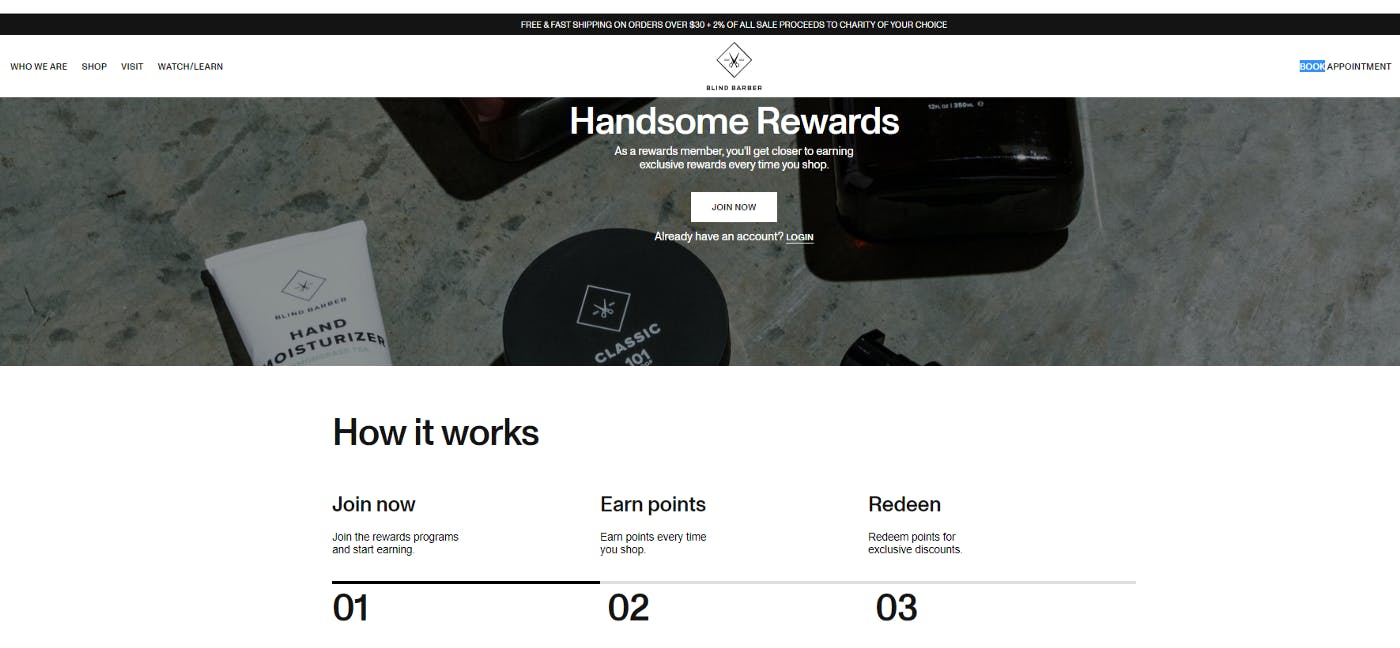
The points reward system from Blind Barber
Types of loyalty programs include the points for perks system shown above, charitable donations (where engagement benefits a third party), paid membership (think Costco), and tiered systems (think gold card).
The thing is that all competitive brands have loyalty programs so it can be hard to stand out. It’s best to do a thorough audit of your competitors' programs and see how you can offer something better. This list of apparel loyalty program examples is a good start.
Create online convenience that meets today’s standards
Convenience has always been important to consumers, and a 2020 Salesforce study even concluded that customers from all generations prioritize it over brand.

Source: Salesforce
So in order to create loyal customers who will love your brand your customer retention strategy actually begins with the making sure your onsite customer journey is up to date.
Convenient navigation
The first rule of ecommerce convenience is getting product discovery streamlined and quick.
The most basic one is your category list on your landing page. It sounds simple enough but making a long list of products easy to read at a glance can be challenging. Big brands do it well:
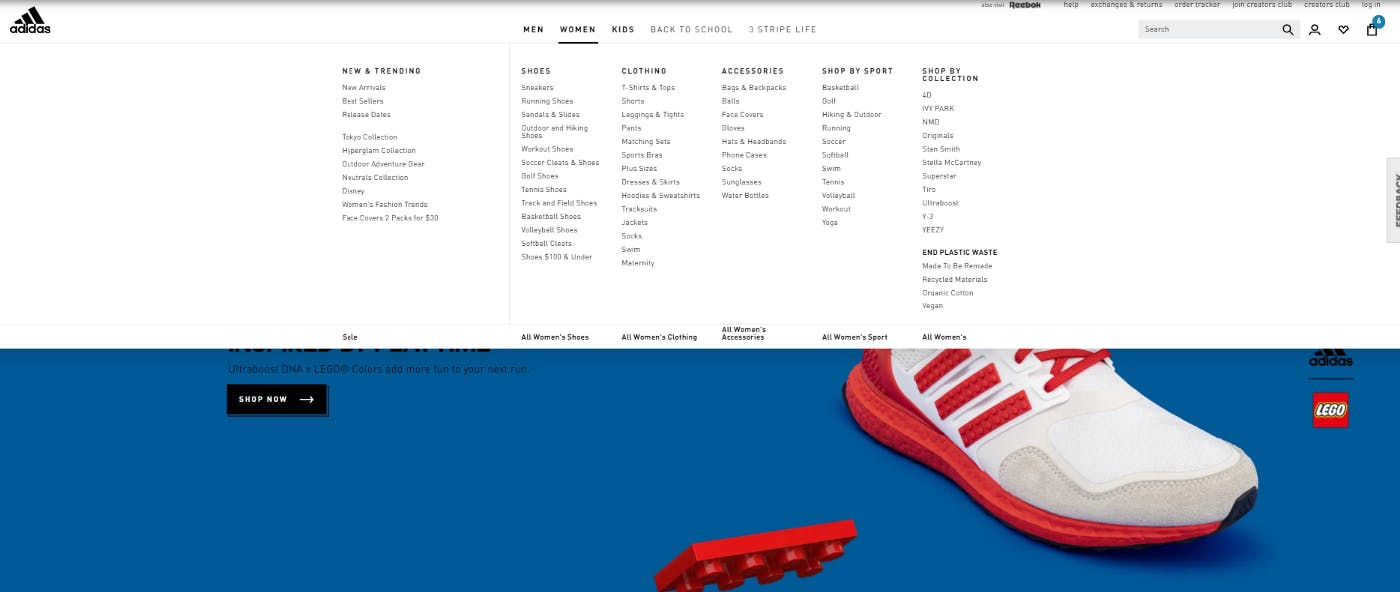
Faceted search and filtering can also greatly improve product discovery and make your CX that much easier for customer to navigate.
Convenient transactions
The next thing to consider is how convenient it is to checkout and pay.
These practices have also evolved in recent years so it’s important that your website is in touch with the latest methods.
Long gone are the days of entering your credit card number into a website. Processing fees are high and PayPal ushered in a new era in alternative payment options that shoppers are already expecting to see, including: digital and mobile wallets, ACH and bank transfers, and even cryptocurrency.
Convenient shipping and returns
Free shipping is truly loved and flexible shipping options are expected. Buy online and pick up in store is a thing now, as is curb-side pick up.
Returns are an enduring problem for ecommerce, especially in the apparel industry where the fit is always in question. Many successful brands bake the cost of returns into the price so they can offer an attractive “free returns shipping” policy.
Without these basics for streamlining the shopping experience, customers will think your website is a hassle and be less likely to return.
Deliver values that your most loyal customers appreciate
Customers appreciate brands that take more social responsibility than ever before. Brands that walk the walk instead of merely talking the talk will stand out.
Salesforce found that 71% of consumers pay more attention to companies’ values than a year ago. And even more significantly, 61% of consumers have stopped buying from a company whose values don’t align with their own!
And when it comes to expectations 89% of customers expect companies to clearly state their values, and 90% expect them to clearly demonstrate those values.
Salesforce, 2020.
Onsite brand values example
Body positive bra brand, Thirdlove, has seen explosive growth recently doesn’t shy away from wearing its values front and center.
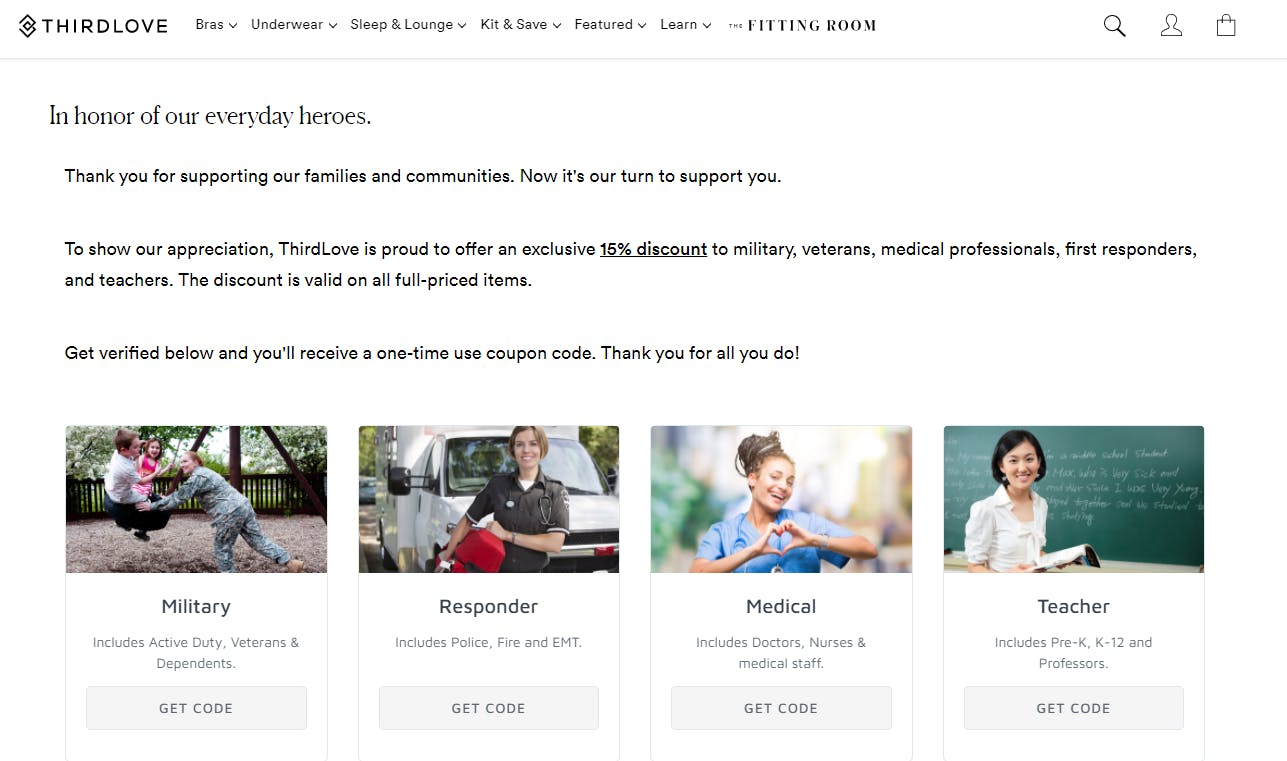
They offer a 15% discount for “everyday heroes” including the military, teachers, first responders and medical workers. Being transparent about values that make emotional connections with new and existing customers.
Next, do something about abandoned carts
There are plenty of things you can do to prevent shopping cart abandonment while your customers are still onsite. But but eventually some will churn and some will bounce. In the second part we'll discus customer retention strategies for re-engaging lost carts.
Part two: offsite customer retention strategies
Using personalized offers to customers who have left your site the other way to boost your customer retention.
Create personalized customer surveys
If you have an email list of shoppers who have bought something from you or even those who have just visited your site it might be worth your while to send out personalized surveys. Another big if is whether or not you have good insights from your existing customer data. You should think of those insights from your original customer data as an asset that can be reinvested in if you send out surveys based and get even more insights about individual shoppers.
The more you now about your customers the more effective your campaigns will improve. Survey providers like Survey Monkey and Pollfish provide platforms for hyper-targeting customers with multiple surveys over large networks.
Send personalized marketing emails
Marketing emails for cart abandonment convert at a high rate compared to other forms of email outreach and should be a highly prioritized part of your customer retention strategy.
If you schedule them to be sent right away it’s best, within a couple hours of the cart being abandoned to remind shoppers while the experience is still fresh.
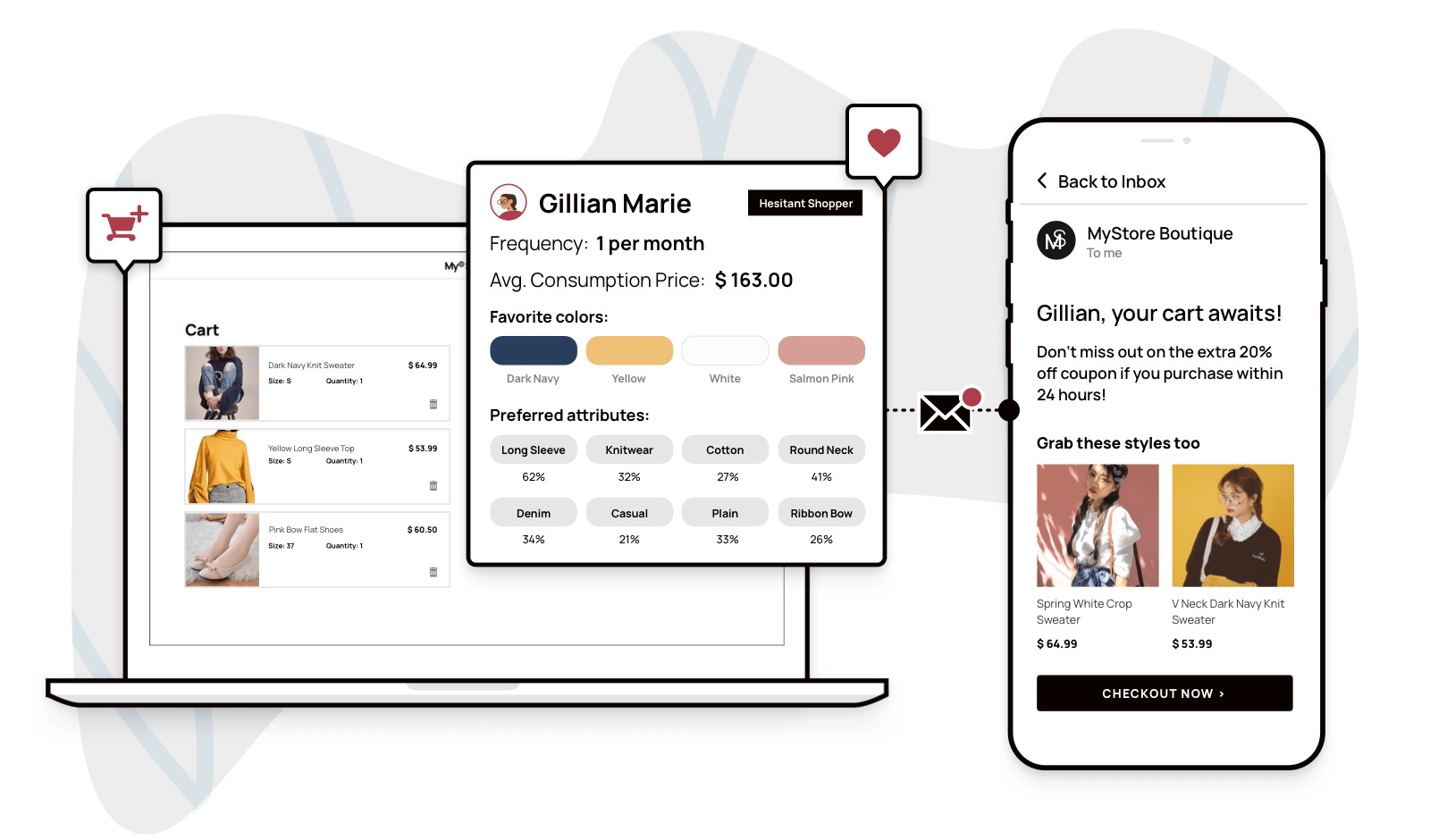
Knowing what customers looked at on your site and in particular, the attributes of the products and services they're interested in lets you personalize your offers and get more cross-sells.
Reach out with personalized SMS
Short message service (SMS) marketing is also known as text message marketing and it's gaining popularity. While email remarketing gets high open rates, the rates for SMS are super high at 98%.
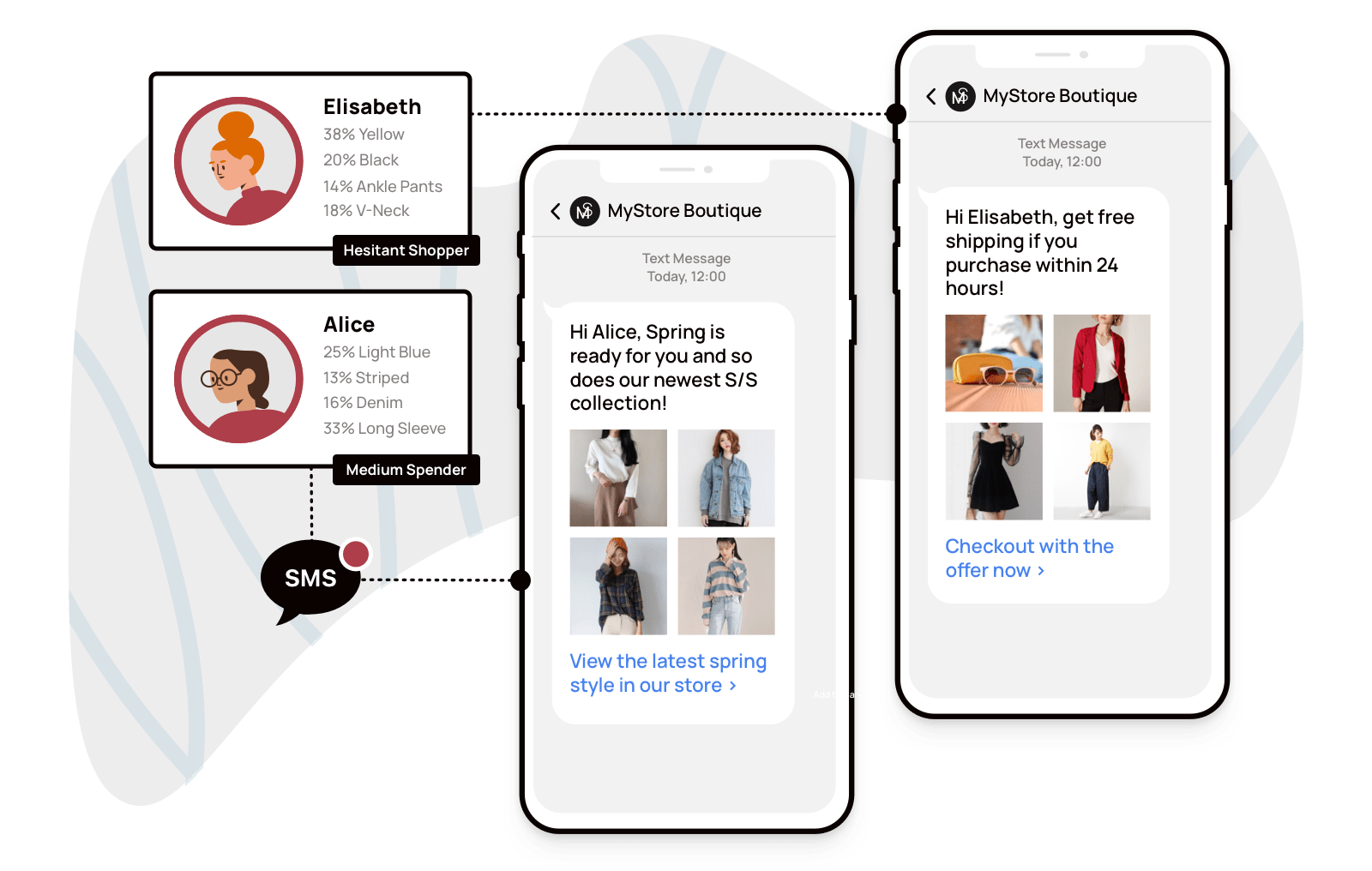
One reason is that we often see an SMS before an email. When an SMS pops up, we read immediately because it’s so short and usually easy to read in its entirety as a notification.
SMS marketing is even more effective when the messages are personalized as noted above for email marketing.
Yes, personalize push notifications too
Relatively under-used as far as customer retention tactics go, push notifications still have more novelty factor than other forms of customer engagement. The advantage is that brands can make themselves stand out from the many apps on a customers' mobile home screen.
When it comes to content, the same rules apply. Getting a customer to open an app is one thing but personalization encourages customers to buy.
Merge your online and offline data
The complete customer journey these days is an online merge offline affair. So understanding the full journey means getting the data points on while they shop online via display ads, market places, your branded website and now, as the pandemic fades into the past, it's more important than ever to also understand what shoppers do when they go window shopping at the mall.
when it comes to putting this idea in to practice. They make the customer journey personal no matter where the shopper is via their excellent app features which also function to continue gathering customer data and further enhance their understanding of their shoppers. It's a perfect feedback loop that makes shoppers happy and let's Sephora know exactly now to continue doing it.
Conclusion: customer retention depends heavily on personalized CX throughout the customer journey
Everything in ecommerce rides on customer experience these days, especially customer retention. 80% of consumers think the online experience a company delivers is just as important at the products it creates.
Whether onsite or off, CX has become a key competitive differentiator because it defines relationships between the people and brands. Apparel, beauty and accessories brands in particular have taken personalized CX to the extreme, making the .
A customer journey that engages a visitor and then nurtures the relationship is making an emotional connection, the thing that influences what we buy more than anything.
Once your brand has made that emotional connection and built that relationship, it’s much more likely that customers will remember you and return to shop again.







